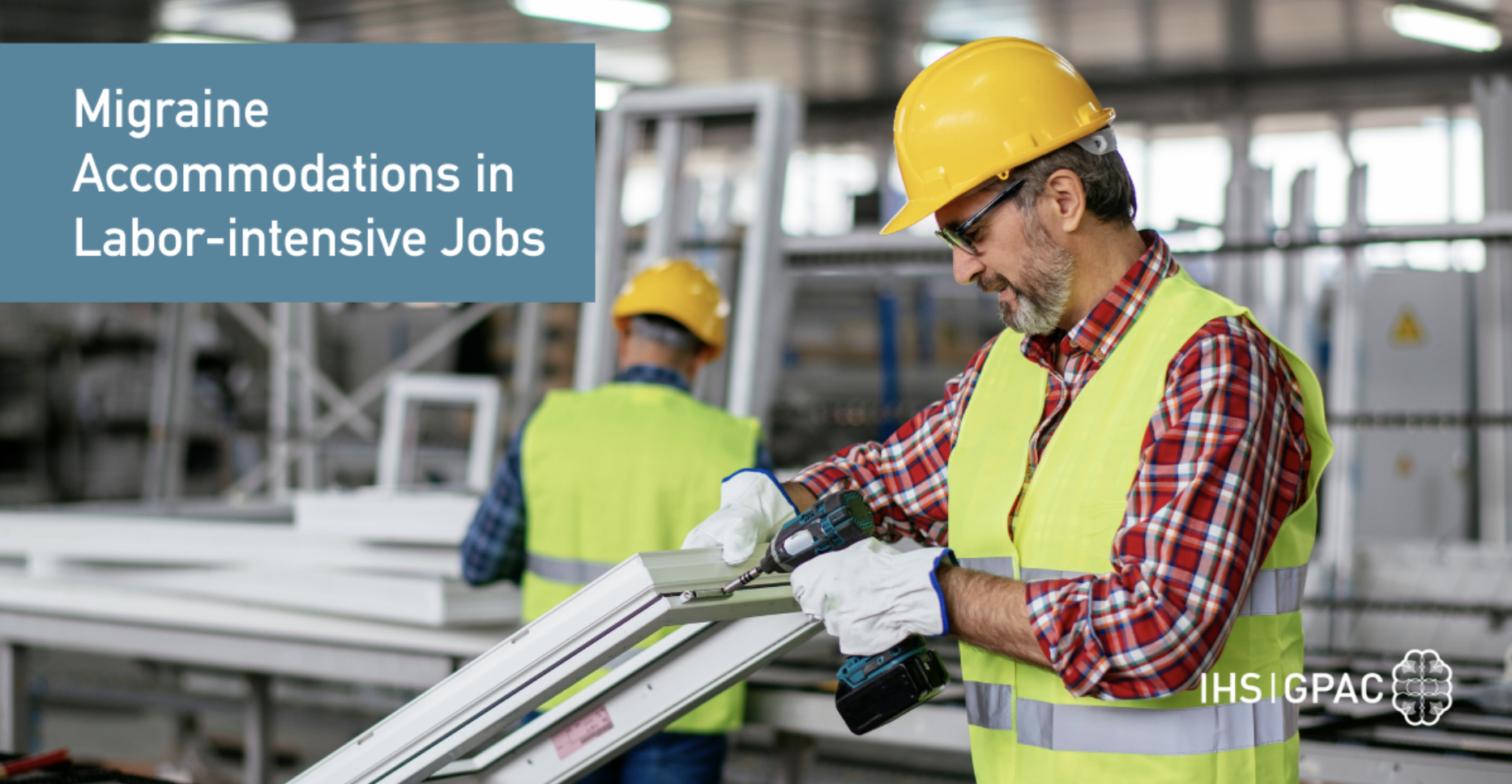News
How Factory Workers Can Cope With and Prevent Migraine

An excerpt from IHS-GPAC, How Factory Workers Can Cope With and Prevent Migraine.
“There are steps factory workers and their supervisors can take to make their workplace more migraine-friendly. Through changes in the environment, workplace culture and company policies, these following five tips offer ways to cope and possibly avoid attacks.
1. Introduce a Workplace Migraine Education Program
[…]
2. Reduce Common Triggers in the Workplace
Working on the factory floor often presents many common migraine triggers. This includes noise, bright lights and physical tasks that may cause poor posture. But there are ways to reduce migraine triggers at work. Factories should follow proper health and safety guidelines, as provided by governmental agencies or professional societies, to promote the wellbeing of workers.
To combat a noisy factory environment, factory workers can wear noise-canceling headphones or earbuds. This not only protects their hearing, but also helps prevent migraine attacks triggered by loud noise.
If there is harsh fluorescent lighting, it may be possible to reduce bright or flickering lights near a person’s workstation. If not, regular breaks for fresh air and natural light can help minimize exposure to potentially triggering lights.
Factory and warehouse workers are often on their feet all day, hunched over machines, packing boxes or lifting heavy objects. Poor posture can cause pain in the neck and shoulder muscles, which can lead to headache. To reduce this pain and strain, workers should be aware of their body alignment and movements, as well as take frequent breaks to rest and stretch.
3. Create a Supportive Workplace Culture
[…] Employees without migraine can support those with migraine by:
- Covering a shift when one of their co-workers is having symptoms
- Checking in on them after attacks
- Showing support for migraine-friendly practices or policies
Having support in the workplace can decrease absenteeism (missing work due to migraine) and presenteeism (coming to work while experiencing symptoms, resulting in lowered productivity and potentially extending recovery time).
4. Establish Migraine-Friendly Policies and Best Practices
[…] Migraine-friendly policies can apply to schedules, time off and breaks. Policies can also apply to reducing potential triggers. For example, providing for consistent daytime or nighttime shifts allow factory workers to maintain a regular schedule and sleep cycle. These are important practices for proper brain health. Under the Family and Medical Leave Act, workers can request reduced work hours or unpaid leaves of absence to cope with and recover from a migraine attack.
While at work, employees should take regular meal and hydration breaks. Skipped or irregular meals and dehydration not only leave workers without the fuel they need to perform, but are also common migraine triggers.
